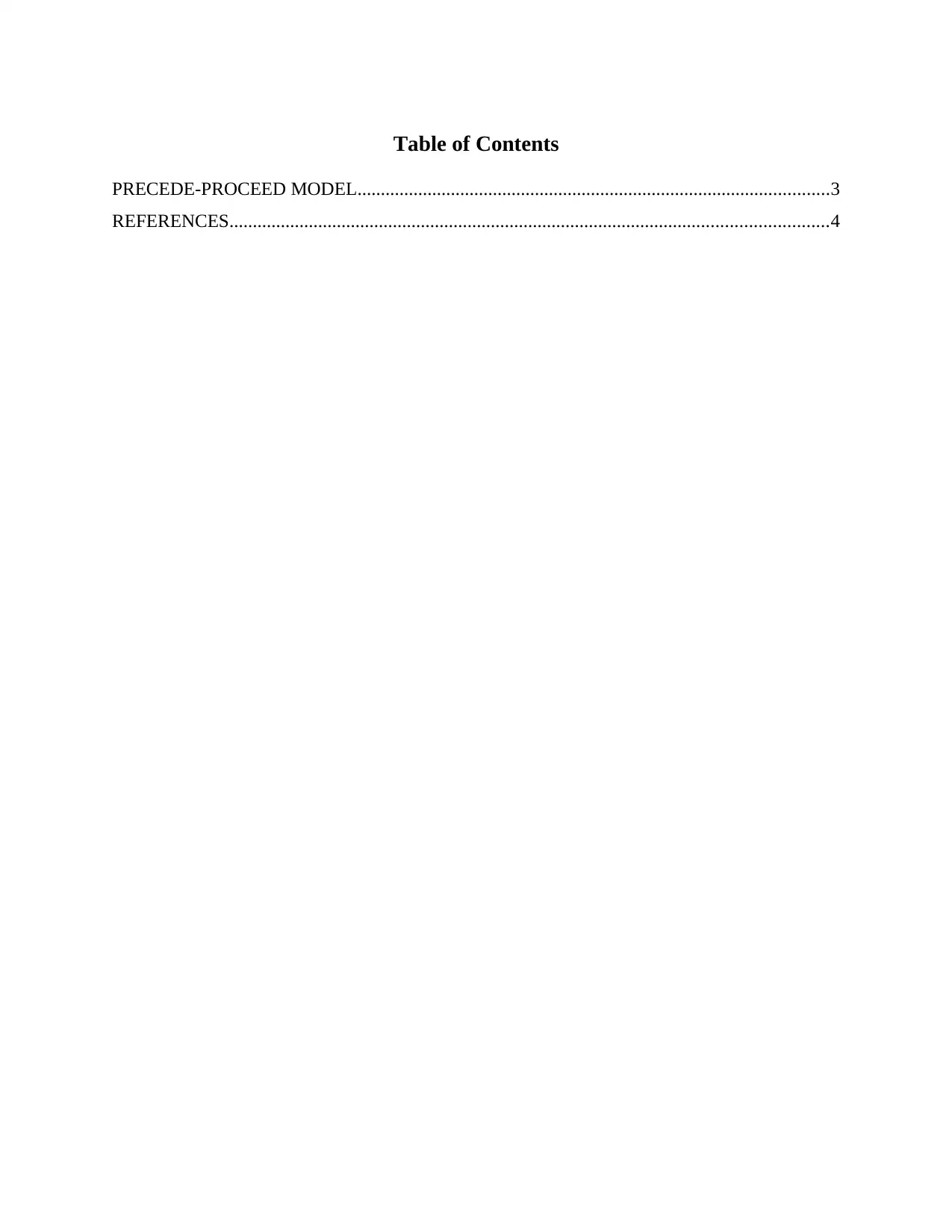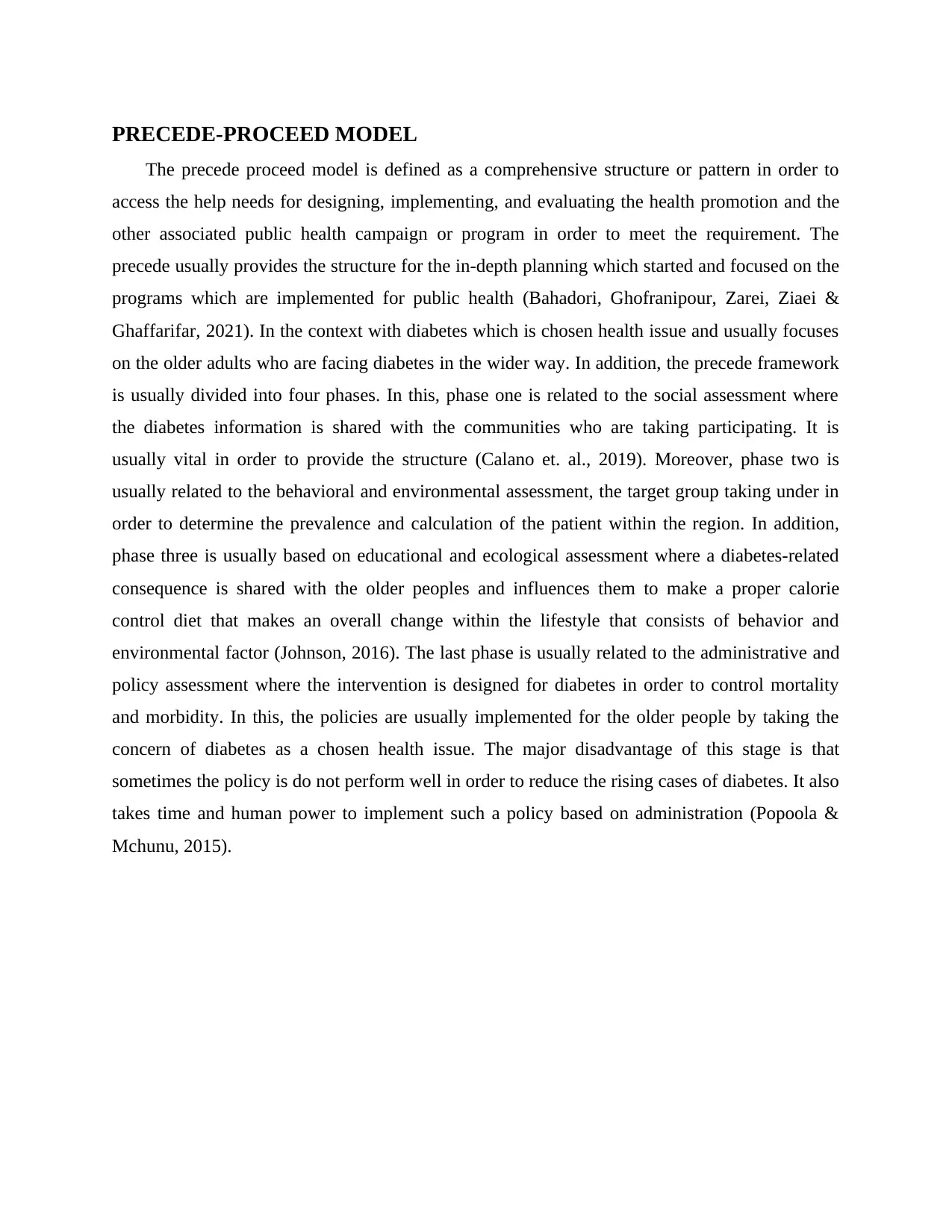PRECEDE-PROCEED Model Application: Health Promotion Programs
VerifiedAdded on 2023/06/12
|4
|579
|393
Report
AI Summary
This report provides an overview of the PRECEDE-PROCEED model, a comprehensive framework for planning, implementing, and evaluating health promotion programs, particularly in the context of public health. The model is discussed in relation to diabetes, focusing on older adults. The PRECEDE framework is divided into four phases: social assessment, behavioral and environmental assessment, educational and ecological assessment, and administrative and policy assessment. Each phase is detailed, including its objectives, advantages, and disadvantages, such as the potential ineffectiveness and resource intensiveness of policy implementation. The report emphasizes the importance of using the PRECEDE framework to construct effective health promotion programs by addressing predisposing, reinforcing, and enabling constructs.
1 out of 4










![[object Object]](/_next/static/media/star-bottom.7253800d.svg)